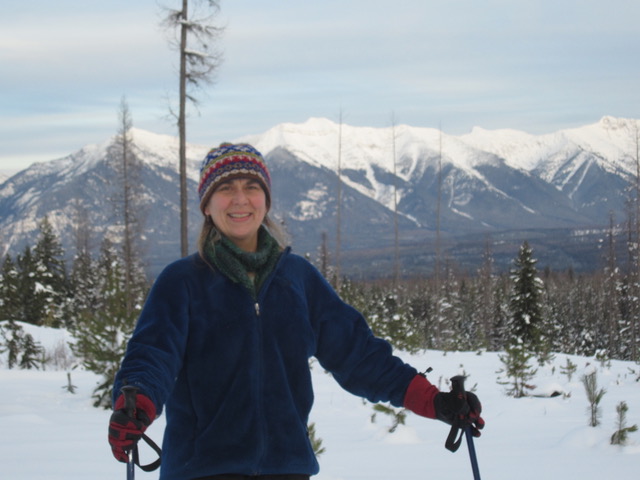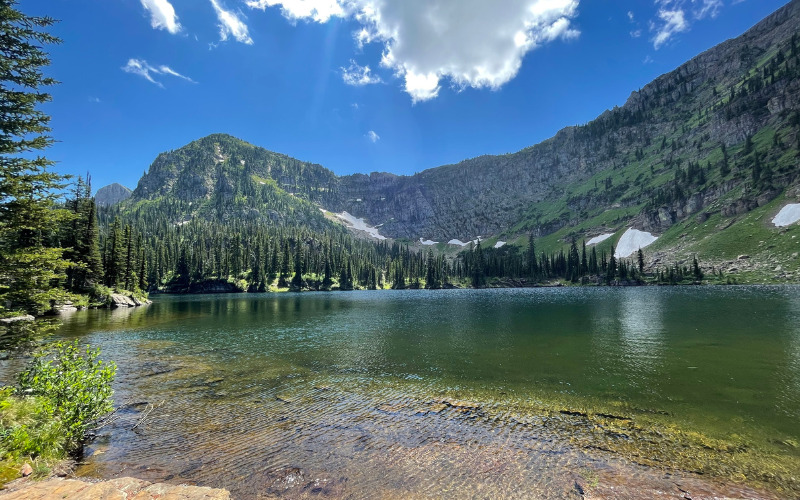
Photo courtesy of Kari Gunderson
A teacher, retired wilderness ranger, and Montanan, Kari Gunderson is a force for nature. Her passion? Wilderness. For 35 years, Kari served as a wilderness ranger in the Mission Mountains Wilderness, located in the Swan Lake Ranger District of the Flathead National Forest. Now, she’s an educator mentoring the next generation of wilderness guardians in her recreation and wilderness management courses at University of Montana and Salish-Kootenai College on the Flathead Indian Reservation.
Lizzy Pennock, Guardians’ Carnivore Coexistence Attorney, sat down with Kari for an inspiring conversation about living a life that honors and celebrates all that is wild.
Lizzy Pennock: What is one piece of advice you’d offer to readers, from your own life experience?
Kari Gunderson: Always have a plan B. Stay flexible, and keep all of your options open. I learned this from my years as a recreation manager professor, where I did a lot of outdoor education with students. And now, in every class I teach, I tell my students: things rarely go as planned, whether it’s a big presentation or conference or you’re out in the wilderness—be ready to fly by the seat of your pants. And hey, sometimes that’s better anyways!
LP: Can you share a memorable moment or experience that solidified your commitment to wildlife and wild places in the West?
KG: I ran into two wolves when I was a wilderness ranger in the Mission Mountains here in Montana. All of a sudden I looked up and saw two huge canines 30 feet in front of me. At first I thought they were huskies, before I realized that couldn’t be true. There were no cars in the parking lot at the trailhead I just parked at. I was face to face with two wolves, and time froze. And then in an instant, they were gone.
LP: What gives you hope in the future of the West?
KG: Jane Goodall, and the future generation of leaders. Jane is such a powerful role model with a massive international audience. She has touched so many lives, and this is the same reason I have been a teacher all my life. There is such a power in teaching, and sharing with students the things I am passionate about and that are important. And that comes right back—I always make sure to listen, hear, and learn from the stories my students share with me. Teaching is an investment in the future generation. My students at the Salish Kootenai College might be future foresters, wildlife or fisheries biologists, and they may be the only person the public makes contact with who is in an official capacity like that. So I instill in them the skills to communicate with others about what we are doing and why it’s important.
LP: Many people may want to get involved in environmental and wildlife conservation efforts but may not know where to start. What advice or suggestions do you have for individuals looking to make a meaningful difference in protecting the West and its wildlife?
KG: Field studies! For those who can, go on a hike or go camping, get in the wild and expand your comfort zone. Face fears of sharing our landscape with bears, wolves, and lions, and learn how to talk in depth about these things. The natural classroom is where we broaden our horizons. And we can also broaden our horizons by learning about nature at nature centers, natural history museums, natural history shows on television—whatever opportunity you have to connect with wildlife and wild places, take it!
LP: And finally, do you have any recommendations on a great wilderness read?
KG:
Sand County Almanac by Aldo Leopold
Billionaire Wilderness: The Ultra-Wealthy and the Remaking of the American West by Justin Farrell.
The Lost Journals of Sacajewea: A NOVEL by Debra Magpie Earling of the Bitterroot Salish

Mission Mountains Wilderness, Montana